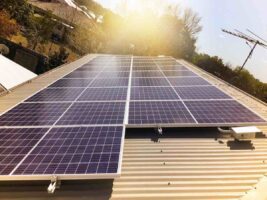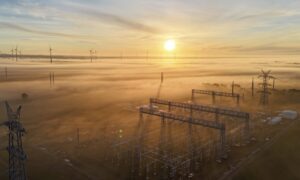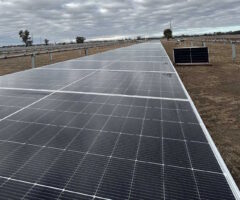The Australian Energy Market Operator is creating a new technical division to focus on system design and engineering as it navigates the clean energy transition, and has appointed the former CSIRO energy chief Alex Wonhas to be the division’s inaugural chief officer.
AEMO chief executive officer Audrey Zibelman said the focus of the new division would be on power system engineering, data science, mathematics, artificial intelligence and even behavioural science.
“Broadened capabilities in all of these disciplines will allow AEMO to identify, architect and then operate our increasingly complex and interconnected energy systems,” Zibelman said in a statement.
“This will enable the reliable and secure integration of new technology into Australia’s energy system while providing the greatest efficiency and cost benefits for consumers.”
The Australian grid is facing a dramatic and rapid transition. The amount of wind and solar on the grid have doubled in three years to the end of 2020, taking its total share to more than 35 per cent.
Some states such as South Australia will be producing as much wind and solar than their annual demand within a decade. Most of Australia’s coal generation will reach its use-by date of 50 years within the next 10 to 15 years.
Most analysts say the transition is inevitable and unstoppable. “The transformation of Australia’s energy sector is gathering momentum like an avalanche,” Wonhas wrote earlier this year, in his role as head of energy, resources and manufacturing at consultancy Aurecon.
This transformation is posing challenges, not least for the rule-makers, regulators and operators struggling to keep up with the pace of technology change.
AEMO, criticised last week by the energy regulator for decisions taken in the lead-up to the state-wide blackout in South Australian in September, 2016, has since taken a more conservative approach to managing the grid.
Some of its initiatives have been seen as too conservative, particularly in relation to connection requirements and generator performance requirements. But observers note that it is also adapting its position as it becomes comfortable with new technologies – and its response to the speed, versatility and accuracy of the Tesla big battery in South Australia is a case in point.
Batteries, however, are just one part of the range of new technologies that will play a key role in the transformation of the grid, the adoption of more wind and solar, the embrace of storage, and the shift to digitalisation and from a largely centralised grid to a distributed one.
In a recent interview with the AFR, Wonhas cited Aurecon’s work in Alice Springs, which he described as a “microcosm” of what is happening for the rest of Australia because of its 50 per cent penetration of solar, and the retirement of much of its ageing thermal capacity.
“So Alice Springs asked the question, ‘What is the most cost-effective way of replacing that?’ They came up with the battery energy storage system (BESS), which is one of the largest grid-connected storage solutions in Australia,” Wonhas said.
Before his work at Aurecon, Wonhas was executive director of environment, resources and energy at CSIRO, and played a key role in the development of their Future Grid scenario; part of a landmark series of publications that argued that embracing the shift to clean technologies would deliver significant savings to consumers over business as usual.
Before that he was a consultant at McKinsey & Co, where he worked on that company’s benchmark report on carbon abatement costs. He holds a PhD in Theoretical Physics from the University of Cambridge.
Recently, Wonhas has written about the grid requirements for the new energy transition, saying that renewables will inevitably replace the coal plants that are due to retire because they are the cheapest option.
“The real challenge for the coming decade will be how to integrate this renewable energy securely and reliably into our energy system,” Wonhas wrote.
“We will no doubt need all of the tools available to achieve this, e.g. dispatchable conventional generators, intelligently controlled demand response, batteries, etc.
“One of the toughest questions to answer, though, is whether or not to invest in new transmission capacity, as some argue. The stakes are high because these are hundreds of millions, if not billions of dollars, long-life assets. We simply cannot afford to build a white elephant.”
To be clear, this was written before the release of AEMO’s Integrated System Plan, which offers a blueprint for the next 20 years and short-term, medium-term and long-term infrastructure needs.
One of the raging debates, however, in the energy industry is exactly how much new network lines will need to be built, and to what extent other options like batteries and demand response can deliver a cheaper alternative.
In another article, Wonhas wrote of four things that big energy users could do to “take matters into their own hands” and reduce electricity costs: invest in a renewables-based power purchase agreement; generate their own power; invest in behind the meter storage; and look at demand response.
Wonhas will begin work in mid-January, and will look to design and scope the direction of this new and exciting division. The division will include AEMO’s planning and forecasting departments who will remain under the leadership of David Swift, executive general manager of planning and forecasting, as well as its power systems of the future work.
“The division will work closely with our operations divisions who manage power systems on both the east and west coast of Australia,” the AEMO statement says.








